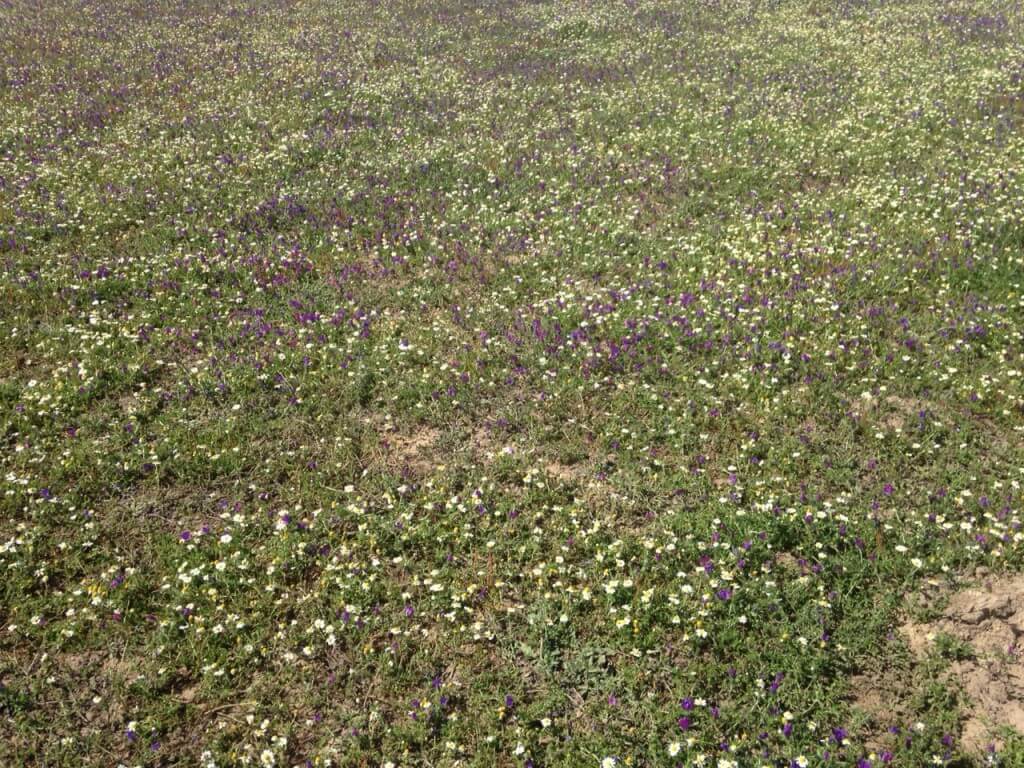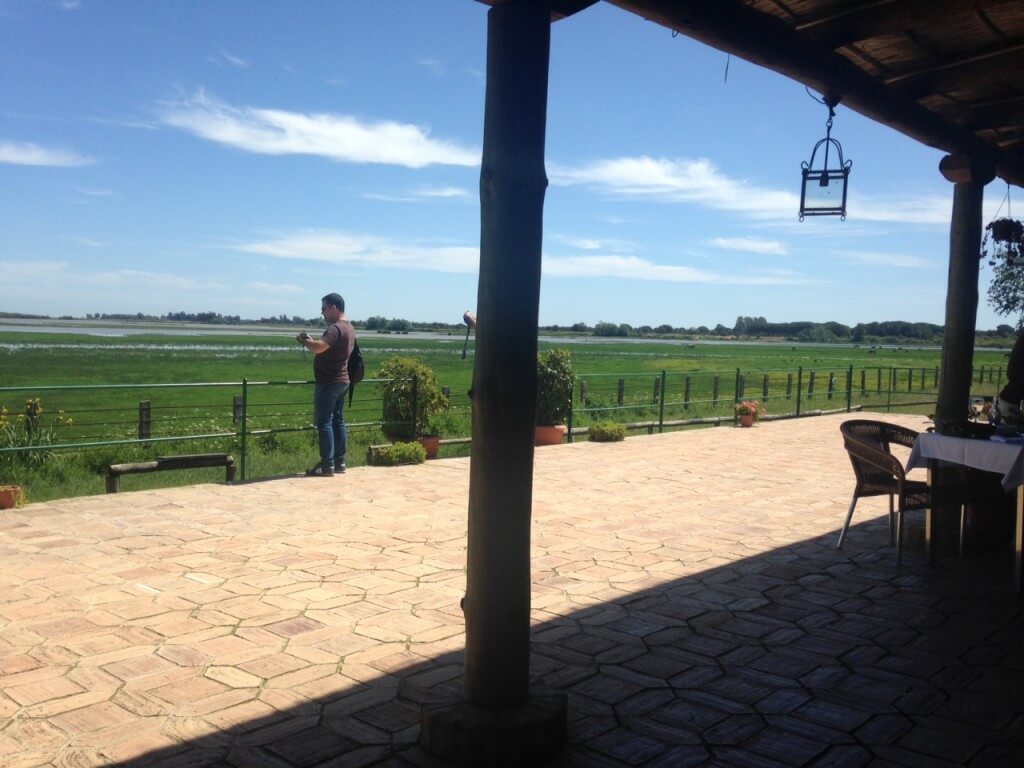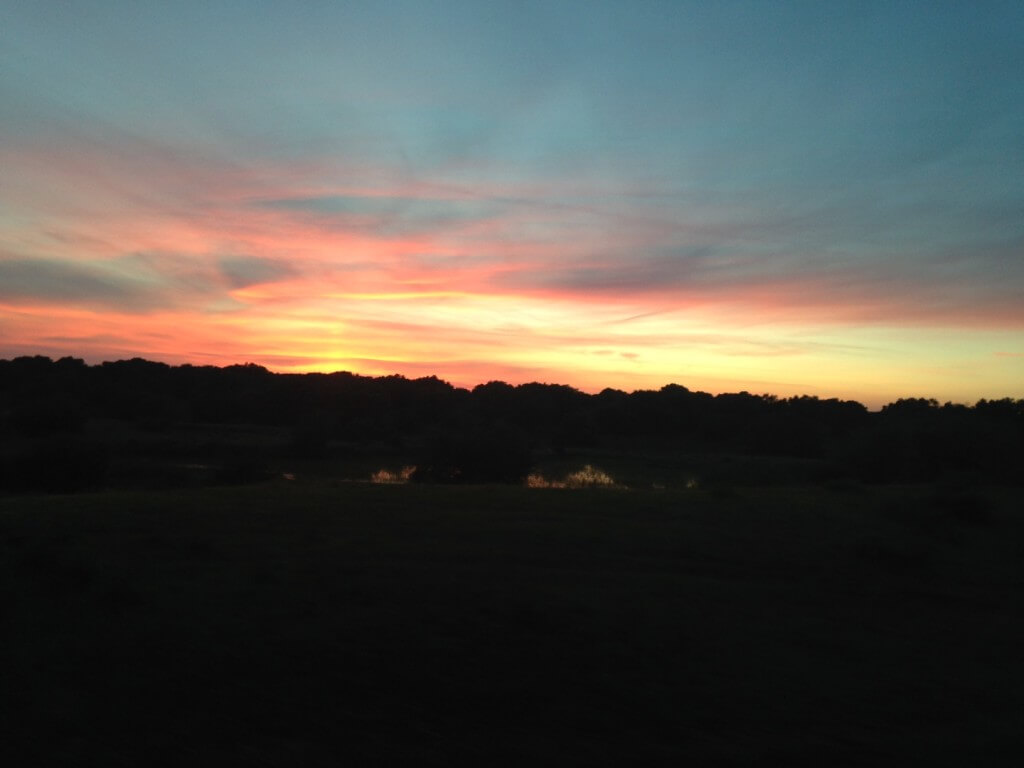The caption to this image (taken by Ed Hutchings – thank you Ed) would have to be, ‘Lord of none of what he surveys’. From the top of this dune in the Coto Donana one could see for miles. Some of Lawrence of Arabia was apparently filmed here.
Looking over the marismas one got a feel for how large the wetlands of the Coto Donana really are. Of course, they are still much reduced from their former glory, but they are spectacularly large.
Up here, it was very, very quiet. No traffic noise, no planes, no people except our small party (and it was noticeable that we were rather hushed, as if we all wanted the silence to win).
Of course, it wasn’t complete silence – there were sounds of wildlife; Flamingos sounding like geese, the occasional ‘Quack!’ from a duck and a displaying Redshank. The Redshank song carried a great distance and sounded so very clear. We could see the male lifting his wings to impress the female, and it was far enough away that there did seem a slight delay in seeing the actions and hearing the calls. But still, the calls were clear and cut through the silence despite the great distance.
![By Panoraview (Own work) [CC BY-SA 3.0 (http://creativecommons.org/licenses/by-sa/3.0)], via Wikimedia Commons](https://markavery.info/wp-content/uploads/2015/04/799px-Panoramica_del_Coto_de_Doñana.jpg)
This was a wet wetland when we visited (although later it will dry out); Black-necked Grebes, Garganey, Red-crested Pochard, Collared Pratincoles, Whiskered Terns, Savi’s and Great Reed Warblers as well as all those herons passing back and forth.
Whereas the top of the dunes had been peaceful and contemplative, this was bustling and envigorating. And well worth the long drive on which you should look out for coots with collars which mean they are Crested, and, if you come the way we did, a colony of Lesser Kestrels (where one male was carrying a long, thin, green snake), and clouds of Spanish Sparrows collecting nest material from the vegetation in the ditches and taking it back to their colony in a distant wood.
This was a carpet of flowers at the Donana Bird Fair and is put in to prove that I do look down occasionally – although I do mostly look up! Looking up here produced 76 Black Kites in one scan 0f the binoculars and there were White Storks nesting everywhere. As I sat in the sun wondering what to write about I noticed that there was hardly a break in the sound of bill-clattering from storks on their nests. If I closed my eyes there were just sounds that I recognised even though they were rather unfamiliar. Alongside the storks and their bill-clattering there were occasional songs or calls of Crested Larks and of Bee-eaters, and even of Black Kites. These were calls that I know even though they are not common in the UK. Also not common in the UK was the constant hum of insects. All those flowers were attracting bees and flies in great numbers. the hum was almost tangible. It is so rare to hear its like in England even on the sunniest of days and the best of nature reserves.
Of course, it wasn’t all hard work – we had lunch too! This view, from the Aires de Donana in El Rocio could have produced a distant Imperial Eagle but whether it was the great companions or the superb food that distracted us (me!) from birdwatching it’s hard to say. There were Whiskered Terns, Flamingos, Spoonbills, Collared Pratincoles, Black-winged Stilts and much more to look at. The food was superb and we were so well looked after, with course after course arriving.
The first time I visited El Rocio, I think about 28 years ago, the road on which we parked was the main road to the coast and Matalascanas, but now a swish new road bypasses the town and the old road can be a safer stopping point for birders to scan the marshes. Some of them might even spot the impressive facade of the church across the marsh.
Our birdwatching skills were a bit dulled by such a fine meal and so we went to look at the Madonna of El Rocio in all her glory in the local church. In the pilgrimage in May there will be around a million people thronging these dusty streets that have the air of a paella western set.
We went looking for Lynxes but we didn’t see any.
That’s not quite the end of the story though. Just knowing that you might see a Lynx is an experience in itself. Now, how can I tell how it matches up to seeing a Lynx – because I haven’t seen a Lynx! I’m pretty sure that seeing a Lynx is better than looking, but I still enjoyed looking.
We sat on a hillside and looked hopefully for Lynx as the sun fell in the sky. There were Mediterranean herbs and scrub and old Olive trees and some Cork Oaks too. Overhead the Black Kites were still circling. There were Flamingos on the lagoon. Even if there had been no chance of Lynx it would have been a good way to spend the time.
I saw a very Lynx-like shape in a distant tree. Then it was very Black Kite-shaped. Then it was rather Eagle Owl-shaped. Then it went back to being Lynx-shaped. But on closer inspection it proved to be a bit of magic wood that could change shape at will.
We didn’t see a single Lynx and yet it was fun looking. I hope there are Lynxes there – I suspect there are. Everybody says there are! But we didn’t see a Lynx, hear a Lynx, we didn’t even get a sniff of a Lynx yet alone touch a Lynx. We didn’t see Lynx poo and we didn’t see Lynx fur. There was not the slightest sign of a Lynx. But it looked a good place for a Lynx and we were told they were there. I’d go back many times to keep looking. If looking for Lynx is that much fun, which it is, just think what it is like actually to see one! That must be just great. I’ll tell you if I ever do see a Lynx – and somehow I really feel I will.
[registration_form]




What a fabulous place, never been but must put it on the list. I do remember being in Seville one May prior to driving to Extremadura. We were staying at a hotel next to the Parliament building only to be woken by heavy gunfire. Fearing an attack on the Parliament it turned out to be the start of one of the pilgrimages to the Madonna of Rocio. Horses, Bullock carts, Guns, 1000s of people and all in streets about 10 foot wide. H&S would have had a field day here. Beautiful part of the world and I don’t know why tourists flock to Spain and stay in hotels by the coast never venturing to the wilder areas.
You’re welcome Mark! Came out better than I thought.
I don’t see what is to dislike about that comment. There appears to be some very unpleasant people reading this blog.
Alan – I don’t see what there is to dislike either. But there are some very nice people reading this blog.
Mark
Sounds as though you are having an amazing time at Donana. A wonderful natural place.
Some years we visited Jerez De la Frontera the other side of the Guadalquivir river. Jerez is one of the sherry towns. We did a tour of a sherry bodega where they explained that the sherry process requires the damp, fungi-laden air from Donana to ensure it works. A great example of an ecological service!
If you have time I recommend a trip to the sherry bodegas of Jerez.
Hazel – thank you for the advice!
Mark, I don’t suppose you happened to notice a southern grey shrike working the scrub just below the lip of the dunes and out to the standing water in the marismas just beyond where you are standing/looking? I was at the very same spot the week before last (on 10th April) and our guide was convinced the bird we were watching whizzing back and forth was probably breeding somewhere just below. Sadly, we didn’t stay long enough to confirm his suspicion.
Meanwhile, Spanish imperial eagles were showing well over the lake at El Rocio last autumn. I suspect you were just unlucky or too distracted as you suggest…..
Keith – talking of distraction, have you remembered whether the serious doubts about the quality and findings of previous research on songbird/predator interactions included that one funded by Songbird Survival a few years ago? You seem to have been too distracted to answer that simple question about your own organisation’s statement.
I really thank you for this wonderful description, not only of the birds you can watch, but of all the feelings that you can be involved with when visiting Doñana.
Please, let me explain just a little mistake: when you see a coot with a collar, it doesn´t mean that it is a crested coot, it means that it is a captive bred crested coot (thanks to Cañada de los Pájaros Captive Breeding Centre)
celia – muchas gracias
Strange reading your report Mark when I’m currently there! Visited all these sites yesterday, got same results ( no lynx) but got Imperial Eagle at El Rocio.
Fabulous place and all in my group were blown away at the Valverde Centre; you just don’t know where to look as birdlife is all over the place.
May return next year for the Birdfare!
Brian – enjoy! I’m glad you can confirm I wasn’t making it all up!